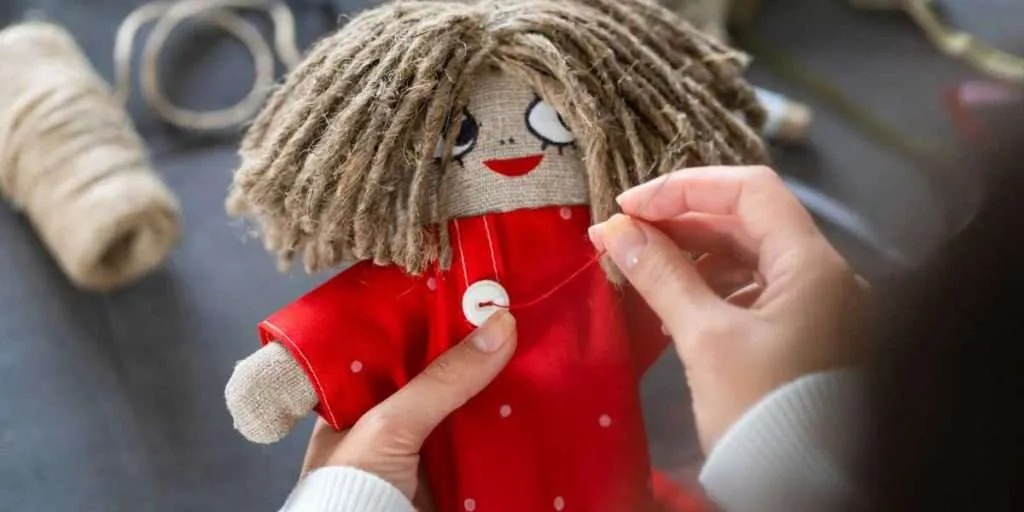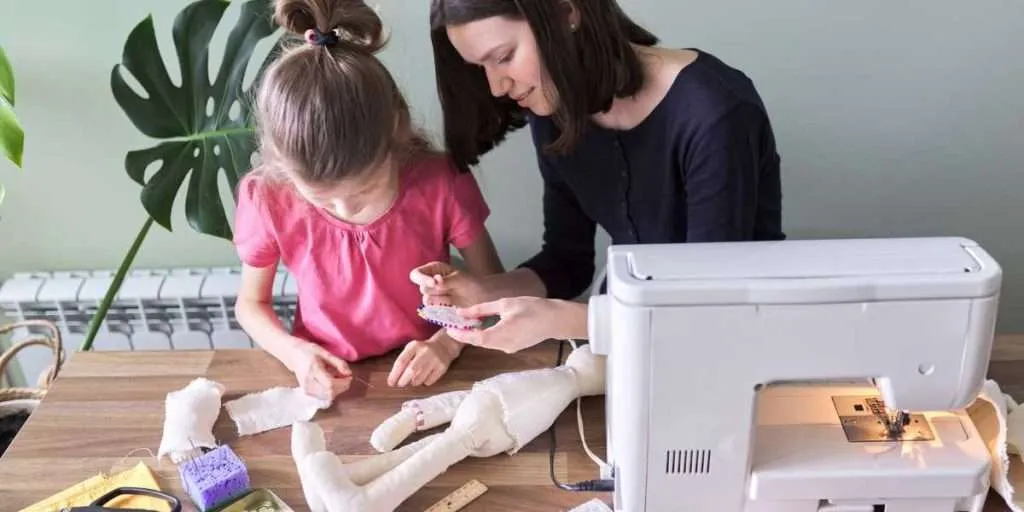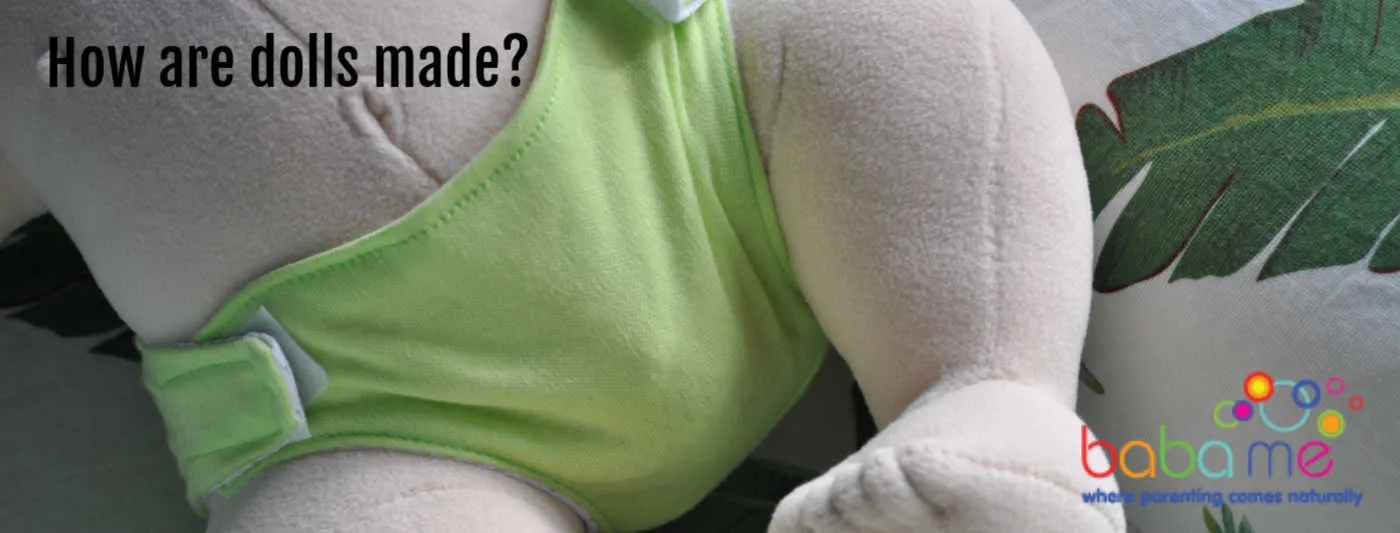Ever wondered about the journey a doll takes from a mere concept to the beloved toy that finds its way into countless homes and hearts? You’re not alone. The art of doll-making has a rich history, with techniques evolving dramatically over time.
Fortunately, the doll-making process is a fascinating blend of artistry, craftsmanship, and technology, ensuring that each doll resonates with its intended audience.
Drawing from my expertise in toys, I’ve woven together a comprehensive guide that delves into the step-by-step process of creating dolls.
Let’s embark on this transformative tale, from design sketches to the final touches, and uncover the meticulous art and science behind crafting dolls.
Key Takeaways
Dolls have been made using a variety of materials and methods throughout history, depending on cultural practices, available materials, and technological advancements.
| Material | Manufacturing Process |
|---|---|
| Bisque | A type of unglazed porcelain. Doll heads are molded, fired, painted, and then fired again to achieve a matte finish. |
| Celluloid | An early plastic material. Heated and then molded into shape. Celluloid dolls were popular in the early 20th century but were flammable and fragile. |
| Hard Plastic | Molten plastic is injected into molds. Once cooled and solidified, the pieces are removed and assembled. |
| Vinyl | Soft and malleable, vinyl is used especially for dolls that need a more lifelike skin texture. It’s heated and poured into molds. |
| Cloth | Cloth dolls are sewn from fabrics and then stuffed. They can be painted, embroidered, or adorned to add facial features and details. |
| Wood | Carved and then sanded to shape. Often painted or varnished. Traditional wooden dolls are often jointed. |
| Paper Mâché | A mixture of paper and glue or paste. It’s molded or layered over a form. Once dried, it’s painted and decorated. |
| Wax | Melted and molded. Wax dolls can be very detailed and were popular in the 18th and 19th centuries. |
| Composition | A mix of sawdust, glue, and other materials. It’s molded into shape and was a common material for dolls in the early 20th century. |
| Rubber & Latex | Liquid rubber or latex is poured into molds. Once set, it’s removed and painted. These dolls are more flexible. |
| Silicone | Used for realistic and reborn dolls. Silicone is mixed, colored, and poured into molds. Once set, it’s painted in layers for a lifelike appearance. |
After the main body parts are formed, dolls often undergo additional processes:
- Painting: Faces are painted, and features are added.
- Hair: Can be wigged, rooted, or painted. Materials range from synthetic fibers to mohair or human hair.
- Clothing: Dolls are dressed in various outfits, often sewn specifically for them.
- Assembly: Limbs, heads, and bodies are joined together using strings, hooks, or joints.
Whether mass-produced or handcrafted, a lot of detail and work goes into making dolls, reflecting the artistry and craftsmanship of their creators.

How are dolls made?
We see dollies everywhere and they’ve been around for literally thousands of years. Not only are they popular toys for children many are also collector’s items for adults. And millions of dolls are made around the world each year.
Early dolls would have been made from materials such as cloth, clay, wood and leather. Dolls made of corn husks were used in harvest celebrations and dolls were also used in fertility rites and to teach children traditions.
Nowadays most homes with children will have dolls in some form, whether they are soft cuddly rag dolls, realistic baby dolls, fashion dolls or super hero’s. So how are all these dolls made.
Dolls have been cherished playthings for centuries, and their manufacturing process has evolved over time. Here’s a general overview of modern doll-making:
- Design and Sculpting: The process begins with a design or concept. Sculptors then create an initial clay or wax model of the doll’s face and body.
- Mold Creation: From the sculpt, a mold is produced, typically made of metal or silicone. This mold will be used to cast multiple dolls.
- Casting: Materials like vinyl, plastic, porcelain, or cloth are poured or injected into the mold. Once set, the material takes the shape of the doll.
- Assembly: Different body parts (head, arms, legs) are assembled and joined. Some dolls have soft bodies, which are stitched and stuffed.
- Painting and Features: Faces are hand-painted or machine-stamped. Features like eyes, eyelashes, and hair are added. Hair can be rooted (strand by strand) or glued on as a wig.
- Clothing and Accessories: Dolls are dressed in outfits, often made from fabrics like cotton, silk, or synthetic materials. Accessories like shoes, hats, and jewelry are added.
- Quality Control: Each doll undergoes inspection to ensure it meets quality standards and safety regulations, especially if intended for children.
- Packaging: The finished dolls are packaged in boxes or blister packs, ready for distribution.
While this process outlines general steps for mass-produced dolls, handmade or artisan dolls might follow a different, more personalized approach. Regardless, safety, especially when using paints and materials, is a paramount concern for dolls intended for young children.
Plastic Dolls
Vinyl plastic dolls are a relatively recent invention in the history of dolls and didn’t start being produced until after world war 2. Most plastic dolls are made from polyvinyl chloride (PVC)
The plastic is heated and moulds are used to create the shape of the dolls, usually either rotational moulding for seamless products or blow moulding for cheaper dolls.
Rubberised plastic is squirted into the moulds which are then heated and rotated so the plastic coats the whole inside of the mould. Creating the head, arms or legs.
Even plastic dolls are generally assembled by hand with hair being sewn on using a special hand-operated sewing machine and facial features being applied in many stages.

Soft dolls
Soft dolls like the gorgeous collection by Rubens Barn are hand made by skilled seamstresses. Although there are still plenty of mothers and grandmothers making dolls for their children and grandchildren.
Rubens Barn dolls have to go through over 100 steps before they are ready to leave the factory, each one lovingly completed by hand. From sewing in the stuffing doll parts to embroidering the eyes and applying the blush to those soft characterful faces to the cloth bodies.
Being made by hand gives the dolls additional character as each one will be slightly different even if those differences are tiny, but it still gives the dolls a unique character that you don’t find in plastic dolls.
Many of the seamstresses have been with the company since they started working with the factory 16 years ago, so they are highly skilled and experienced.
Wooden Dolls
Wooden dolls might have been amongst the first dolls ever made but you don’t see all that many today. Or not wooden baby dolls anyway. One style of wooden doll, the Russian dolls or matryoshka, however, are still popular toys today.
Most dolls Matryoshka are generally still handcrafted by highly skilled woodcarvers and painted by hand. With workers carefully selecting the perfect pieces of wood to make each doll.
It’s incredible to think really that even in an age where so many processes have been automated and handed over to machines. Some of our most beloved toys, those invented 1000’s of years ago, are still primarily made by hand.
The high level of human input required though means that most toy manufacture has moved to areas where labour is a cheap commodity, making it even more important to ensure you buy ethically made toys where people are paid fairly for their work.






